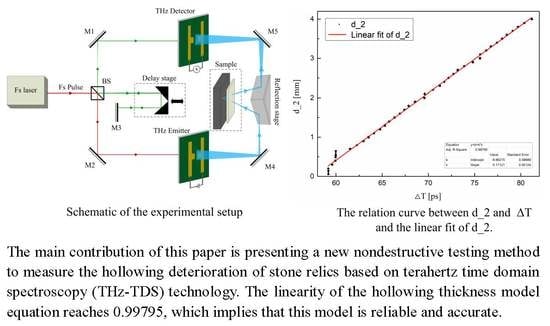Nondestructive Testing of Hollowing Deterioration of the Yungang Grottoes Based on THz-TDS
Abstract
1. Introduction
2. Hollowing THz-NDT Theory
2.1. Single-Point Thickness Extraction Hollowing Model
2.2. Simplified Hollowing THz-NDT Model
3. Experimental Method
3.1. Nondestructive Testing Using THz Wave Technique
3.2. Hollowing Deterioration Sample Preparation and Testing
4. Results and Discussion
5. Conclusions
Author Contributions
Funding
Conflicts of Interest
References
- Shyllon, F. International Standards for Cultural Heritage: An African Perspective. Int. Crimes 2017, 5, 347–363. [Google Scholar]
- Turkington, A.; Martin, E.; Viles, H.; Smith, B. Surface change and decay of sandstone samples exposed to a polluted urban atmosphere over a six-year period: Belfast, Northern Ireland. Build. Environ. 2003, 38, 1205–1216. [Google Scholar] [CrossRef]
- Doehne, E.; Price, C.A. Stone Conservation: An Overview of Current Research, 2nd ed.; Getty Conservation Institute: Los Angeles, CA, USA, 2010; pp. 1–25. [Google Scholar]
- Gericke, O.R. Determination of the Geometry of Hidden Defects by Ultrasonic Pulse Analysis Testing. J. Acoust. Soc. Am. 1963, 35, 364. [Google Scholar] [CrossRef]
- Jiles, D. Review of magnetic methods for nondestructive evaluation (Part 2). NDT E Int. 1990, 23, 83–92. [Google Scholar] [CrossRef]
- Márquez, E.; Ramirez-Malo, J.; Villares, P.; Jiménez-Garay, R.; Ewen, P.J.S.; Owen, A.E. Calculation of the thickness and optical constants of amorphous arsenic sulphide films from their transmission spectra. J. Phys. D Appl. Phys. 1992, 25, 535–541. [Google Scholar] [CrossRef]
- Hellier, C.J. Handbook of Nondestructive Evaluation; Mcgraw-hill: New York, NY, USA, 2001. [Google Scholar]
- Leona, M.; Casadio, F.; Bacci, M.; Picollo, M. Identification of the Pre-Columbian Pigment Mayablue on Works of Art by Noninvasive UV-Vis and Raman Spectroscopic Techniques. J. Am. Inst. Conserv. 2004, 43, 39–54. [Google Scholar] [CrossRef]
- Anouncia, S.; Saravanan, R. Non-destructive testing using radiographic images? A survey. Insight Non-Destructive Test. Cond. Monit. 2006, 48, 592–597. [Google Scholar] [CrossRef]
- Puryear, C.I.; Castagna, J.P. Layer-thickness determination and stratigraphic interpretation using spectral inversion: Theory and application. Geophysics 2008, 73, R37–R48. [Google Scholar] [CrossRef]
- Duling, I.; Zimdars, D. Revealing hidden defects. Nat. Photon 2009, 3, 630–632. [Google Scholar] [CrossRef]
- Lü, Q.; Tang, M.-J.; Cai, J.; Zhao, J.-W.; Vittayapadung, S. Vis/NIR hyperspectral imaging for detection of hidden bruises on kiwifruits. Czech J. Food Sci. 2011, 29, 595–602. [Google Scholar] [CrossRef]
- Duvillaret, L.; Garet, F.; Coutaz, J.-L. Highly precise determination of optical constants and sample thickness in terahertz time-domain spectroscopy. Appl. Opt. 1999, 38, 409–415. [Google Scholar] [CrossRef]
- Ospina-Borras, J.E.; Benitez-Restrepo, H.D.; Benitez-Restrepo, H.D. Non-Destructive Infrared Evaluation of Thermo-Physical Parameters in Bamboo Specimens. Appl. Sci. 2017, 7, 1253. [Google Scholar] [CrossRef]
- Zhang, W.; Lei, Y. Progress in terahertz nondestructive testing. Chin. J. Sci. Instrum. 2008, 29, 1563–1568. [Google Scholar] [CrossRef]
- Jolly, M.; Prabhakar, A.; Sturzu, B.; Hollstein, K.; Singh, R.; Thomas, S.; Foote, P.; Shaw, A. Review of Non-destructive Testing (NDT) Techniques and their Applicability to Thick Walled Composites. Procedia CIRP 2015, 38, 129–136. [Google Scholar] [CrossRef]
- Park, S.-H.; Jang, J.-W.; Kim, H.-S. Non-destructive evaluation of the hidden voids in integrated circuit packages using terahertz time-domain spectroscopy. J. Micromech. Microeng. 2015, 25, 95007. [Google Scholar] [CrossRef]
- Cheng, L.; Wang, L.; Mei, H.; Guan, Z.; Zhang, F. Research of nondestructive methods to test defects hidden within composite insulators based on THz time-domain spectroscopy technology. IEEE Trans. Dielectr. Electr. Insul. 2016, 23, 2126–2133. [Google Scholar] [CrossRef]
- Oh, G.-H.; Jeong, J.-H.; Park, S.-H.; Kim, H.-S. Terahertz time-domain spectroscopy of weld line defects formed during an injection moulding process. Compos. Sci. Technol. 2018, 157, 67–77. [Google Scholar] [CrossRef]
- Lewis, R. A review of terahertz detectors. J. Phys. D Appl. Phys. 2019, 52, 433001. [Google Scholar] [CrossRef]
- Wang, Y.; Sun, Z.; Xu, D.; Wu, L.; Chang, J.; Tang, L.; Jiang, Z.; Jiang, B.; Wang, G.; Chen, T.; et al. A hybrid method based region of interest segmentation for continuous wave terahertz imaging. J. Phys. D Appl. Phys. 2019, 53, 095403. [Google Scholar] [CrossRef]
- Akevren, S. Non-Destructive Examination of Stone Masonry Historic Structures Quantitative IR Thermography and Ultrasonic Testing. Master’s Thesis, Middle East Technical University, Universiteler Mahallesi, Cankaya Ankara, Turkey, 2010. [Google Scholar]
- Wang, Y.; Xia, Y.; Zhang, J.S.; Li, H.S.; Dai, S.B.; Tang, Z. Experimental Research about Weathering Resistance and Surface Deterioration of Two Kinds of Stone Cultural Relics. Adv. Mater. Res. 2011, 250, 65–69. [Google Scholar] [CrossRef]
- Li, L.; Zhou, M.; Ren, J. Test of the adhesive thickness uniformity based on terahertz time-domain spectroscopy. Laser Infrared. 2014, 44, 801–804. [Google Scholar] [CrossRef]
- Tanaka, S.; Shiraga, K.; Ogawa, Y.; Fujii, Y.; Okumura, S. Applicability of effective medium theory to wood density measurements using terahertz time-domain spectroscopy. J. Wood Sci. 2014, 60, 111–116. [Google Scholar] [CrossRef]
- Zhang, Z.; Wang, K.; Lei, Y.; Zhang, Z.; Zhao, Y.; Li, C.; Gu, A.; Shi, N.; Zhao, K.; Zhan, H.; et al. Non-destructive detection of pigments in oil painting by using terahertz tomography. Sci. China Ser. G Phys. Mech. Astron. 2015, 58, 124202. [Google Scholar] [CrossRef]
- Yang, Y.; Wu, T.V.; Sempey, A.; Pradère, C.; Sommier, A.; Batsale, J.-C. Combination of terahertz radiation method and thermal probe method for non-destructive thermal diagnosis of thick building walls. Energy Build. 2018, 158, 1328–1336. [Google Scholar] [CrossRef]
- Swanepoel, R. Determination of the thickness and optical constants of amorphous silicon. J. Phys. E Sci. Instrum. 1983, 16, 1214–1222. [Google Scholar] [CrossRef]
- Auston, D.H.; Cheung, K.P.; Valdmanis, J.A.; Kleinman, D.A. Cherenkov Radiation from Femtosecond Optical Pulses in Electro-Optic Media. Phys. Rev. Lett. 1984, 53, 1555–1558. [Google Scholar] [CrossRef]
- Fattinger, C.; Grischkowsky, D. Terahertz beams. Appl. Phys. Lett. 1989, 54, 490–492. [Google Scholar] [CrossRef]
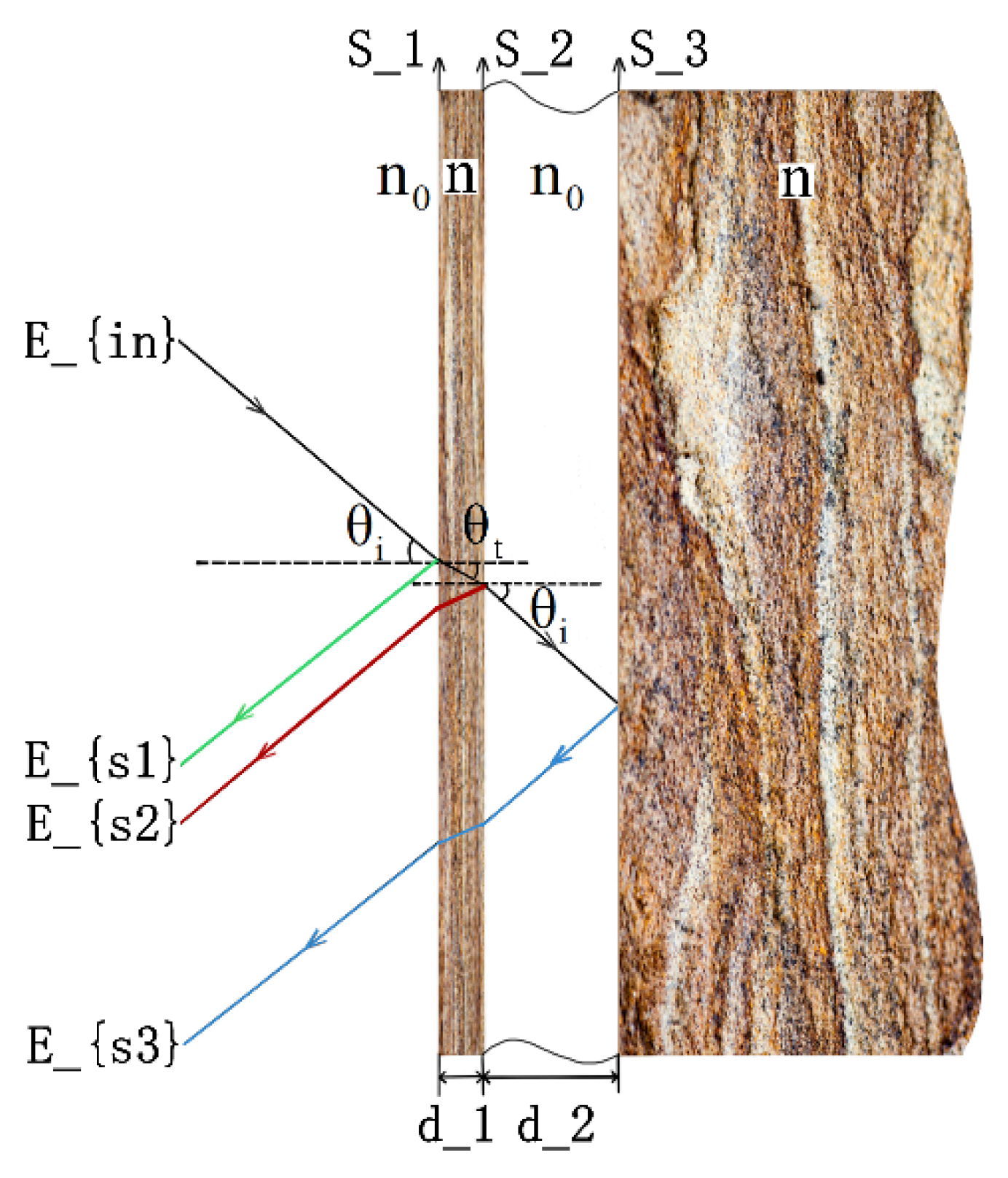
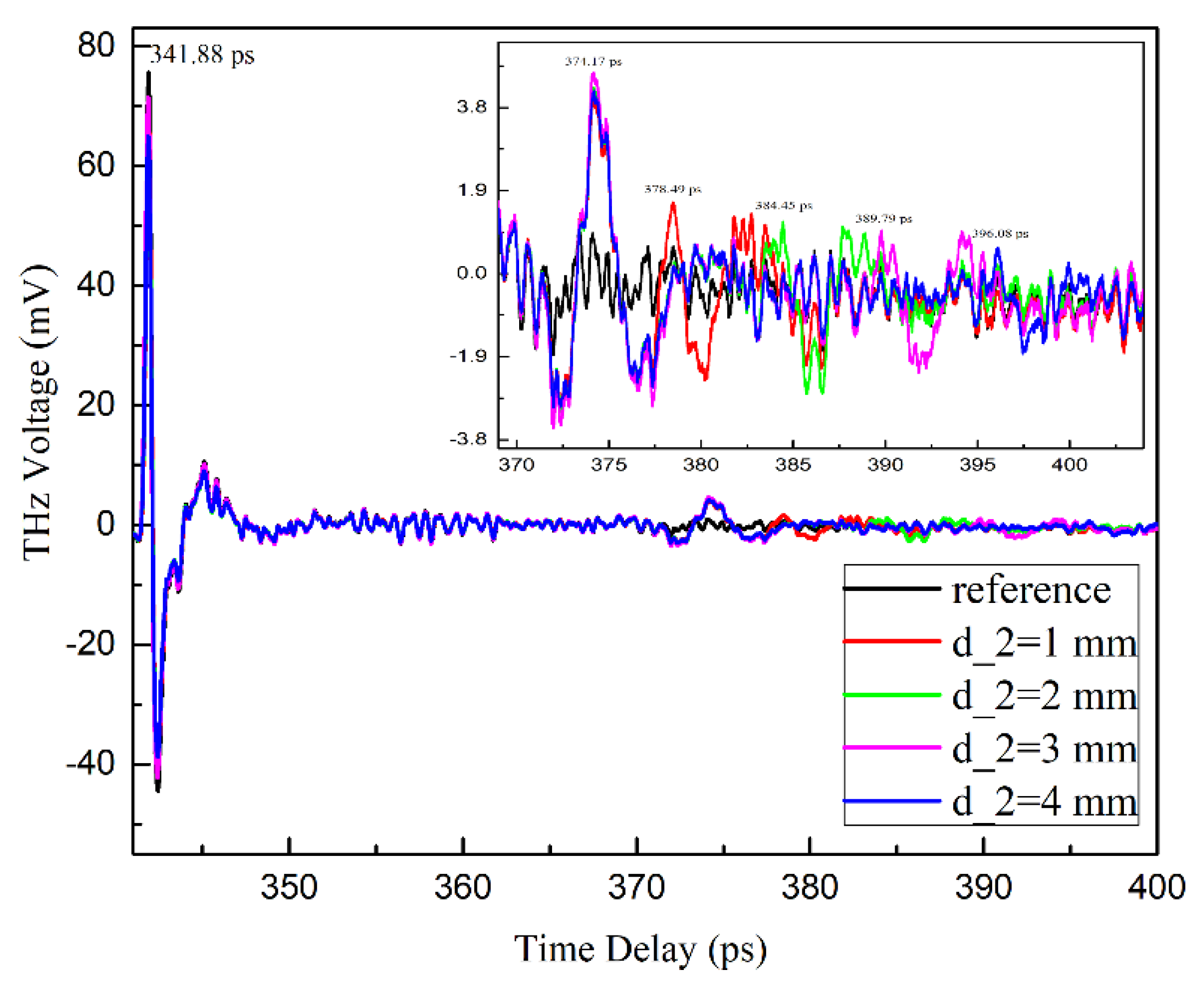


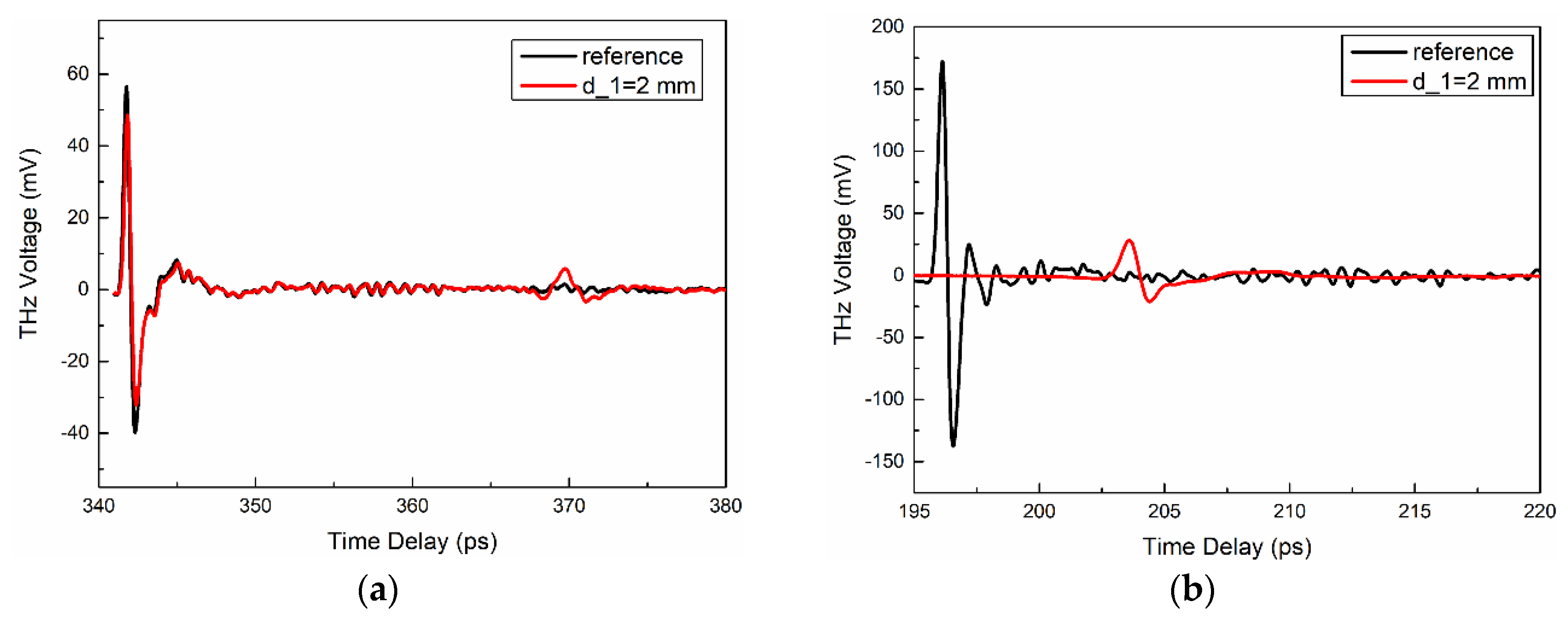

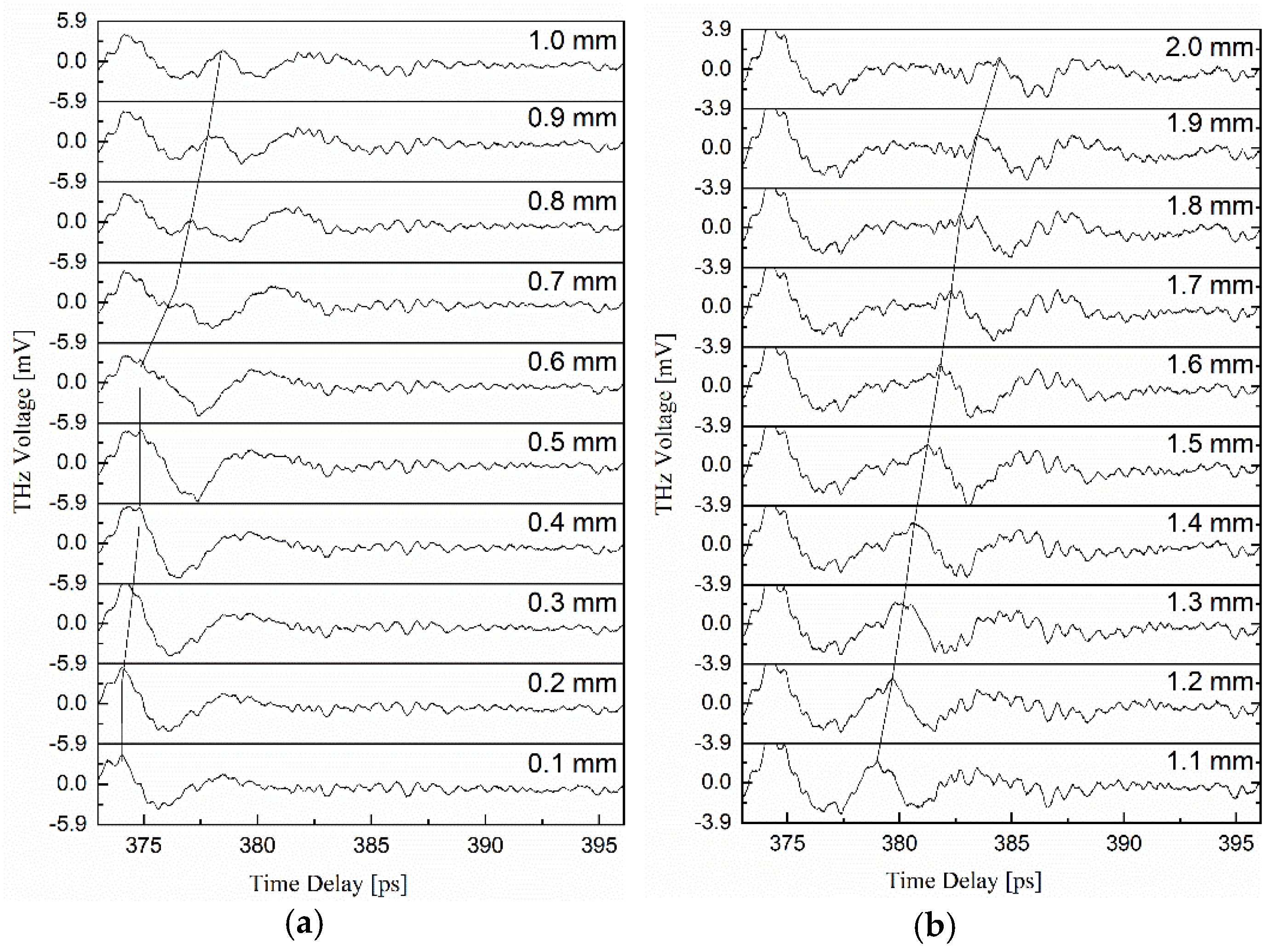

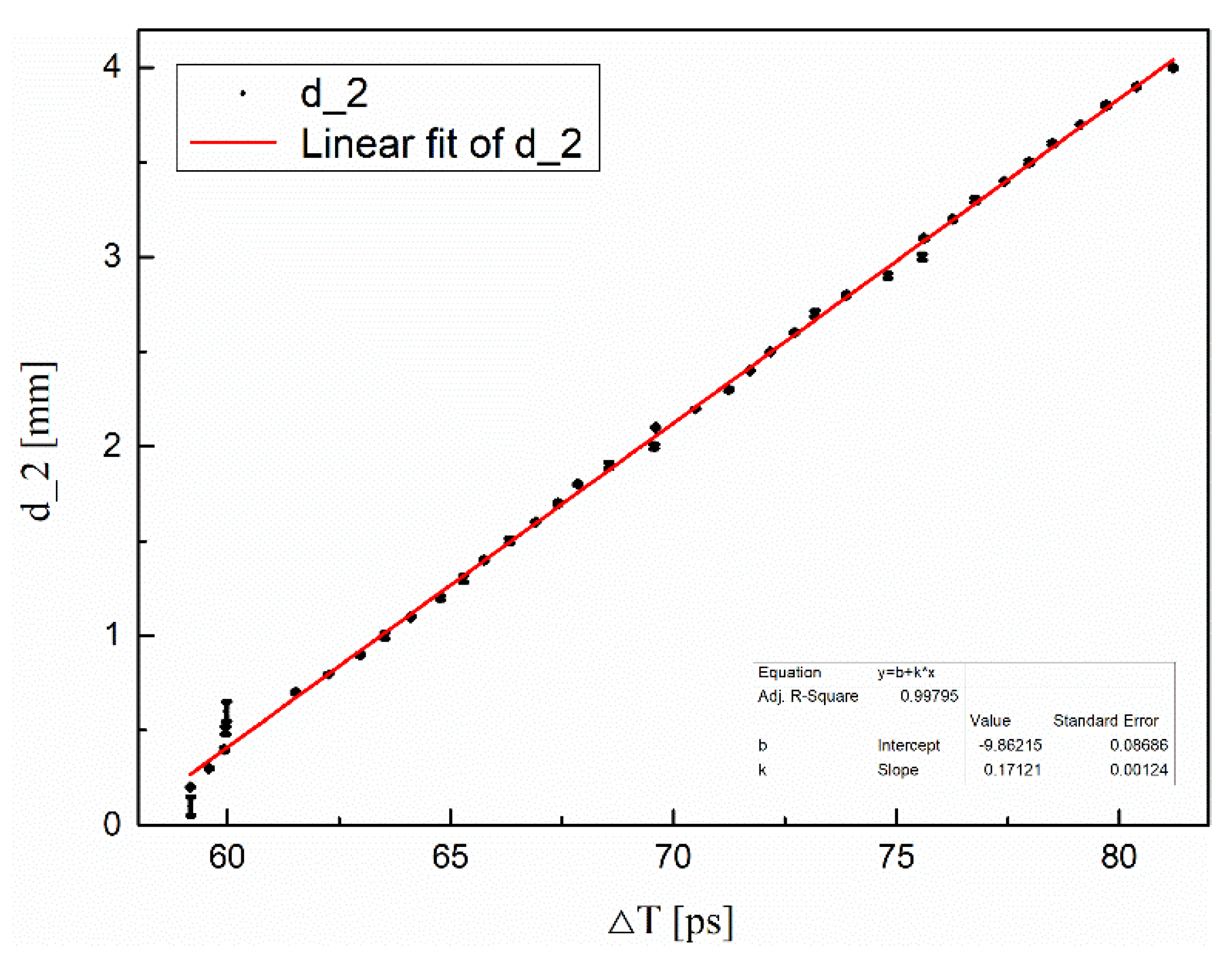
© 2020 by the authors. Licensee MDPI, Basel, Switzerland. This article is an open access article distributed under the terms and conditions of the Creative Commons Attribution (CC BY) license (http://creativecommons.org/licenses/by/4.0/).
Share and Cite
Feng, J.; Meng, T.; Lu, Y.; Ren, J.; Zhao, G.; Liu, H.; Yang, J.; Huang, R. Nondestructive Testing of Hollowing Deterioration of the Yungang Grottoes Based on THz-TDS. Electronics 2020, 9, 625. https://doi.org/10.3390/electronics9040625
Feng J, Meng T, Lu Y, Ren J, Zhao G, Liu H, Yang J, Huang R. Nondestructive Testing of Hollowing Deterioration of the Yungang Grottoes Based on THz-TDS. Electronics. 2020; 9(4):625. https://doi.org/10.3390/electronics9040625
Chicago/Turabian StyleFeng, Ju, Tianhua Meng, Yuhe Lu, Jianguang Ren, Guozhong Zhao, Hongmei Liu, Jin Yang, and Rong Huang. 2020. "Nondestructive Testing of Hollowing Deterioration of the Yungang Grottoes Based on THz-TDS" Electronics 9, no. 4: 625. https://doi.org/10.3390/electronics9040625
APA StyleFeng, J., Meng, T., Lu, Y., Ren, J., Zhao, G., Liu, H., Yang, J., & Huang, R. (2020). Nondestructive Testing of Hollowing Deterioration of the Yungang Grottoes Based on THz-TDS. Electronics, 9(4), 625. https://doi.org/10.3390/electronics9040625



